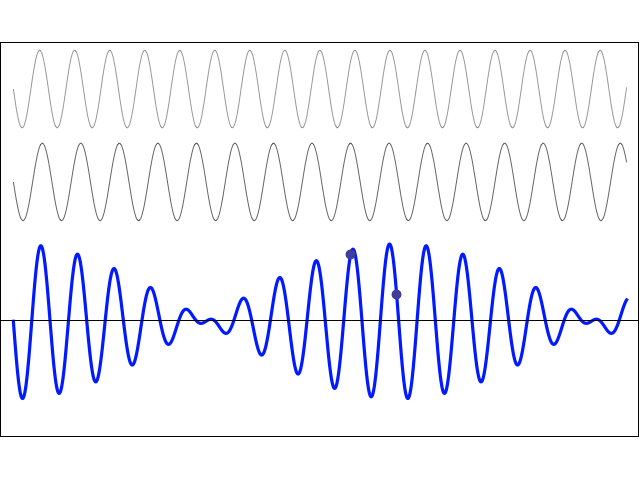Interference - Beats

The spacing for the teeth in these two combs is slightly different, which means they line up periodically. A similar thing happens when two sound waves have slightly different frequencies. The amplitude of the resultant sound modulates, just as the color of the overlapping teeth modulates. This effect is known as "beating."
The two waves in gray have slightly different frequencies, and are propagating at the same speed. The "local" amplitude that you hear as two sound waves varies as the constructive and destructive interference cycles.
The envelope produces a beating wave. The beat frequency is the difference between the frequencies of the two waves.

Beating provides a very useful method for musicians tuning instruments. The musician listens to the beat frequency, knowing that when the beat frequency goes to zero, the notes are in tune.
Putting it all together
How is this man able to make music using wine glasses and water?

Animation courtesy of Dr. Dan Russell, Grad. Prog. Acoustics, Penn State